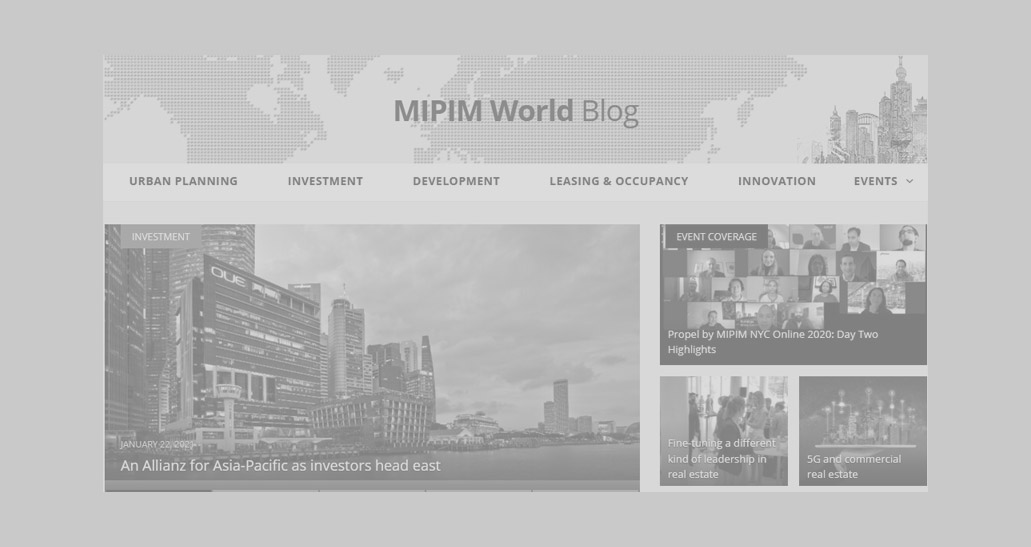A quarter of the world will live in Africa by 2050, the UN announced in advance of World Population Day 2019 on 11 July. This will follow a predicted doubling in the continent’s population.
Worldwide, five of the nine countries showing the biggest population increases are in Africa: Nigeria, the Democratic Republic of Congo, Ethiopia, Tanzania and Egypt.
Most of this growth is in urban areas, where tremendous poverty sits alongside the wealth of Africa. Last year, Nigeria overtook India as the country with the most people living in extreme poverty, despite India’s population being seven times larger.
On Cities Workshop – rising to the challenge of scalable models
The world’s fast-growing urban areas was the focus of the On Cities Workshop held at the Norman Foster Foundation in Madrid this May, and chaired by Luis Bettencourt, Pritzker Director of the Mansueto Institute for Urban Innovation at the University of Chicago.
The On Cities Workshop saw a special challenge to imagine “scaleable models of architecture and design that work along with vernacular forces in the built environment and can lead to fast and sustainable development in millions of neighbourhoods over the next decade.”
Africa rewards – as well as risks
Africa is also a continent with an extremely rich potential. “The world’s second largest continent is bouncing back,” Charles Hecker and Mark Whyte of Control Risks, the world’s largest risk specialist consultancy, told Global Real Estate Experts earlier this year.
At MIPIM 2019, one of the key topics for the conference session Africa: Growth & Investments was how to manage risk in Africa.
The session, moderated by Greg Pearson, Co-Founder of GRIT, a real estate income group, highlighted, the diversity of Africa: “Africa is a fascinating continent. With 54 countries, this means 54 cultures, 54 ways of doing business and 54 potential investments. At GRIT, our strength is to know how to screen the best opportunities.
“Africa is understood through its people: during the last years, we have established strong relationships with partners in each country where we operate, thus allowing us to open doors and secure our portfolio.”
How to approach risk in Africa
Charles Hecker of Control Risks introduced the Africa Risk-Reward Index, which is produced twice a year in partnership with Oxford Economics, the world’s largest macroeconomic forecaster & consultancy.
“Every investor has a completely unique appetite to risk” – Charles Hecker, Control Risks
The index blends political, economic and security matrixes to give ratings for each country.

Countries highlighted by Hecker included:
- Uganda and Rwanda, where reward has outstripped risk since June 2018. “These are places that we see with a promising future in terms of risk and reward,” said Charles.
- Gabon, Nigeria and Congo, where elections have been held over the past ten months, and risk outstrips reward. “Anticipating what’s going to happen after an election is an incredibly important metric for following political risk,” said Hecker.
“Every investor has a completely unique appetite to risk,” he added, as he warned against comparing the US or UK markets with Africa.
“It’s about managing the risk down into your comfort zone” – Charles Hecker.
The approach to risk, said Hecker, is to take what you want to invest in, whether a country or a project, and to look at the risks – political, economic, corruption, integrity, partners. Then it is about “managing the risk down into your comfort zone, while still being able to get the high returns that you want from being in a higher risk jurisdiction”.
How to make yourself less vulnerable in a partnership
Partnership is key. “In every project you’re going to develop a community of stakeholders,” explains Hecker. “If you don’t know every single one of those stakeholders, you are making yourself vulnerable.”
“Unless there is due diligence, due diligence and due diligence, the risk from partnerships becomes an enormous red flag” – Charles Hecker, Control Risks.
“Unless there is due diligence, due diligence and due diligence, the risk from partnerships becomes an enormous red flag. Build that stakeholder map, build your stakeholder community, know that map, and know exactly where the friction points are in in all those relationships,” warned Hecker, who has worked in the region for 20 years.
The investor perspective – GRIT
When investor group GRIT set out to expand in Africa, they first looked at Morocco where they bought Anfa Place Shopping Centre in Casablanca in 2014.
The group chose Morocco as it is one of three investment grade countries in Africa, along with Mauritius and Botswana. “Then we thought we would throw in another country beginning with an ‘M’ – Mozambique,” he added.
At the time, Mozambique was going through quite a lot of volatility, politically and on the investment side, said Pearson. GRIT first looked at the business model of their targeted tenants. This turned out to be hard currency. “That’s when we realised we could take a country like Mozambique and turn it into a good investment,” Pearson added.
After their initial purchase of the KPMG/Hollard building in downtown Maputo, they now have a portfolio of nine properties in Mozambique, split between offices, industrial, retail and corporate housing.
GRIT also has investments in Botswana, Ghana, Kenya, Mauritius and Zambia. “It’s about focussing on what is holding up the economy, whether tourism in Mauritius or oil & gas in Mozambique,” Pearson said.
Centum Real Estate – retail in East Africa
Samuel Kariuki, Managing Director of Centum Real Estate, spoke about his company’s Two Rivers Lifestyle Centre in Nairobi.
This mixed-use project opened in February as the biggest mall in Eastern and Central Africa, with 66,000 sq m GLA of retail and 20,000 sq m of office space, together with a new public school.
Despite the demographic in Africa, Kariuki said, it is a very tenant driven market, especially in East Africa. Supermarkets and F&B perform particularly well, especially brands that bring a mass market type of product, such as the French brands Carrefour and Decathlon. “We may talk about an African rising, the rising middle class, the characteristic of that middle class is ‘peculiar’,” said Kariuki.
Kariuki added that outside South Africa there were very few strong African brands so in general they needed to rely on foreign brands to anchor malls.
Rents are quoted in US dollars across East Africa. “This is in anticipation that the currencies are somewhat overvalued,” said Kariuki.
“At Two Rivers the value uplift is coming from the de-risking process. If you tailor your investment approach to specific countries and to the risk profile that you are looking to take, there is a significant return to be made,” he added.
Nigeria: a population set to grow to 400 million
As of 2018 Nigeria has been the largest economy in Africa. Its population is expected to double to around 400 million by 2050.
Economic activity is focussed on Lagos, Abuja and Port Harcourt. In these markets, with investors having piled into the office and retail markets, talk has turned to oversupply, Bolaji Edu, CEO Broll Property Services told the MIPIM audience.
For office buildings in the right location and built to the right specifications, good returns are still available, he added. And for retail – Nigeria has just over 400,000 sq m of enclosed retail mall shopping in all of the country – it is about having a strong leisure and F&B element, and the right anchors (most often South African brand ShopRite) and sub-anchors.
The lack of infrastructure in Lagos
In just two generations Lagos has grown from 200,000 to nearly 20 million people, with most residents living in slums.
The lack of infrastructure has led to more investment in mixed-use schemes, especially in the two main commercial zones, Victoria Island and Lagos Island.
The privately funded Eko Atlantic, for example, on Victoria Island occupies 10 million square metres of reclaimed land and is the size of “Manhattan’s skyscraper district”. Once completed it will be home to 300,000 people with a further 200,000 commuters.
“The great thing is that these mixed-use schemes take a lot of the population out of the centre of Lagos so reducing pressure on the existing infrastructure in the centre,” said Bolaji.
Building your own infrastructure in Africa
The utility infrastructure is the biggest challenged faced by investors, said Edu. Having to generate your own power and water supply can add 30-40% to development costs.
At the Two Rivers Lifestyle Centre in Kenya, Centum built their own substation. They then connected this to the national utility substation, with the power generated distributed to the neighbourhood. They also had to put in their own water supply.
Hecker responded: “What we’re seeing, in particular in the case of the energy sector in Mozambique, is that you’ve got to do the infrastructure yourself. It’s going to be in partnership with somebody. It may have an element of government support, but it’s DIY in terms of getting the infrastructure taken care of.”
Risk is in the eye of the beholder, just like beauty, said Hecker.
Control Risks will be releasing the next edition of the Africa Risk-Reward Index at the end of July. It will be downloadable at www.controlrisks.com. Or you can contact Barnaby Fletcher, Senior Analyst, Southern Africa, at barnaby.fletcher@controlrisks.com.



